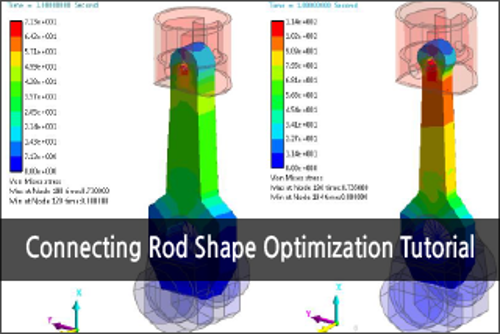System-Level Optimization – RecurDyn/AutoDesign
Designing a mechanical system often involves optimizing the design variables with respect to specific performance metrics. There are many types of optimization and many software tools that are used, as summarized in the article found at https://www.digitalengineering247.com/article/design-optimization-past-present-and-future/, that was written by well-known CAD/CAE/CAM/PLM industry observer, Bruce Jenkins. This article includes a list of 55 vendors of optimization software tools for use in engineering. Many of these tools contain optimization algorithms but also require the user to connect the optimization tool to the engineering tool of interest, whether FEA, CFD, etc.
RecurDyn includes a system-level optimization module that is like a hidden jewel because it provides a high-performance optimization tool that is already fully integrated into RecurDyn, but is generally not well known to RecurDyn users. This module, AutoDesign, is convenient and efficient to use because of its straightforward user interface and use of common RecurDyn entities such as expressions and design variables.
Some of the unique characteristics of AutoDesign include:
- The world’s first progressive meta-model algorithm, motivated from Bayesian Global Optimization
- Easy definition and customization of design variables and objective functions
- Robust design optimization techniques to consider uncertainties such as tolerances and noise
- Multi-scale optimization techniques to solve engineering models which have design variables of different scales
- Easy and powerful multi-objective optimization algorithm which can be used regardless of the number of objectives
- Optimization with a relatively small number of trials as compared to a full factorial DOE. Please keep in mind that the optimization performance depends upon the smoothness of the model response to design changes. Highly nonlinear models will require a higher number of runs to converge to an optimum.
The AutoDesign user interface is built into the ribbon of the RecurDyn graphical user interface, as shown in the figure.

The various modules of AutoDesign are summarized below:
Design Study (Study) – provides 6 methods for DOE (Design of Experiments)
- Provides methods to perform DOE with the optimal number of samplings.
- 2-level and 3-level orthogonal array experiments are automatically generated according to the number of design variables.
- Descriptive DOE allows the user to define the level and the number of experiments.
- Effect analysis, screening variables and correlation analysis are supported.
Design Optimization (Opt) – optimizes the system using a meta-model.
- A progressive meta-model based optimization technique is employed to reduce the number of trials (analyses).
- Even beginner users can use optimization using automated methods.
- Various options are supported for experienced users.
- Existing optimization results can be reused.
- All difficult selections of optimization algorithms are automated.
DFSS/Robust Design Optimization (Robust) – supports DFSS (Design for Six Sigma).
- A progressive meta-model based optimization technique is employed to reduce the number of trials (analyses).
- Variance of performance during optimization process can be estimated.
- Users can define the tolerance and deviation of random design variables and random noise.
- Adaptive 6-sigma inequality constraints are considered, unlike other optimization tools which focus on only statistical dispersion.
- User can define the robustness of objective functions.
Reliability Analysis (Reliability group) – produces reasonable reliability results with less samplings.
- SAO Hybrid Method: Powerful Reliability algorithm which is integrated with Progressive meta-model based optimization techniques and MPP-based DRM (Dimension reduction Method).
- Adaptive Monte-Carlo Method: New method which uses sequentially adaptive Monte-Carlo algorithm to minimize the number of sampling points.
To learn more about the AutoDesign processes you can refer to any of the many tutorials, which can be viewed from the following links:
 Connecting Rod Shape Optimization https://support.functionbay.com/en/tutorial/single/34/autodesign-connecting-rod-shape-optimization
Connecting Rod Shape Optimization https://support.functionbay.com/en/tutorial/single/34/autodesign-connecting-rod-shape-optimization- Landing Gear System https://support.functionbay.com/en/tutorial/single/36/autodesign-landing-gear-system
- Paper Feeding System https://support.functionbay.com/en/tutorial/single/38/autodesign-paper-feeding-system
- Suspension System https://support.functionbay.com/en/tutorial/single/40/autodesign-suspension-system
- Paper Distributing System https://support.functionbay.com/en/tutorial/single/42/autodesign
- Catapult System https://support.functionbay.com/en/tutorial/single/44/autodesign-catapult-system
- Three-Ball Contact https://support.functionbay.com/en/tutorial/single/46/autodesign-three-ball-contact
